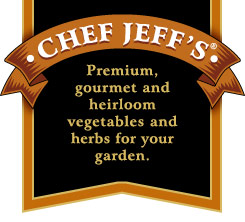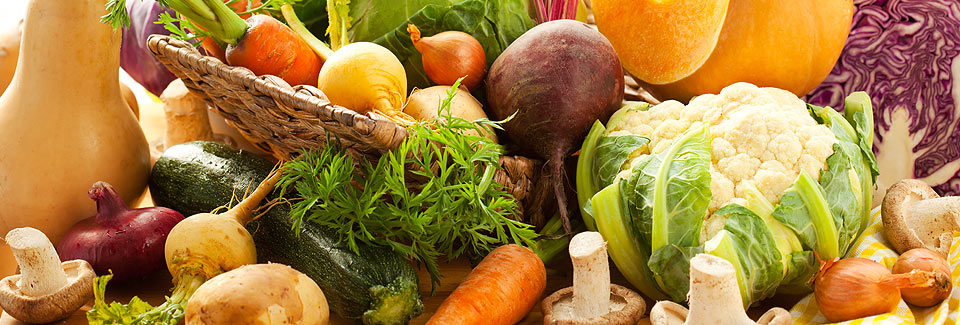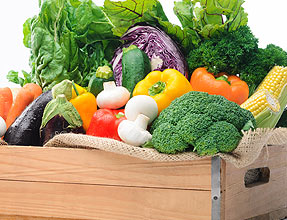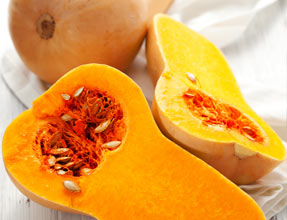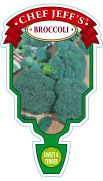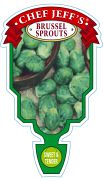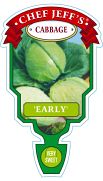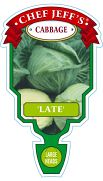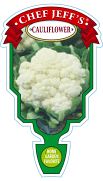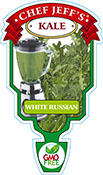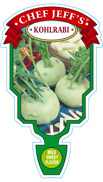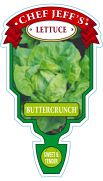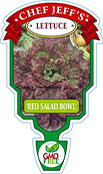Standard
| Variety | Description | Height | Spacing | Fertilizer |
Bush Bean Blue Lake 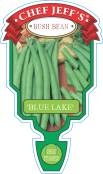 |
Plump, round, tender and dark green beans with delicious flavor on and off the plant. A good source of vitamins A and C, iron and calcium. Outstanding garden performance with large 6-7inch pods that are meaty and stringless. Used for canning, freezing, or fresh for the garden. Water well in warm weather and fertilize with liquid or slow release plant food for best results. | 18″ | For best results feed with liquid or slow release plant food. | |
Cantaloupe – Classic 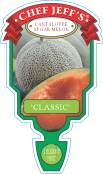 |
A sweet tasting melon ideal for the home vegetable garden. Plant in mounds in groups of 3 plants, allowing 1 foot between each plant. Allow 4-6 feet between each mound. Perfect for use in fruit salad or eaten on its own. For best results feed with a liquid or slow release fertilizer. | 12″ | For best results feed with liquid or slow release plant food. | |
Cat Grass  |
Cats love the sweet taste of fresh oat grass and crave the young, tender blades of grass. When the grass reaches 2-4 inches high, put it near your cat’s food or water dish for easy nibbling. It will even help keep your cat from eating your houseplants. Cat grass can be grown indoors year round on any windowsill in sun or bright, filtered light. It is a nutritious treat for your cat with essential vitamins and minerals. It will aid in their digestion, freshen their breath, and is even said to help eliminate hairballs. This grass is also safe for dogs, guinea pigs, and rabbits to eat. Keep soil moist but not wet. | 12″ | Great for pots | |
Corn Chubby Checkers 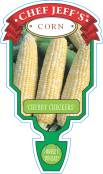 |
This deliciously sweet bi-color corn is as pretty on the table as it is on the stalk. Nice mix of white and yellow kernels. Plant in double rows to achieve optimum pollination. | 8″- 10″ | For best results feed with liquid or slow release plant food. | |
Cucumber Burpless 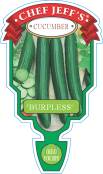 |
A long,. tapered, juicy cucumber. A very productive variety that sets fruit sooner than other slicing cucumbers. Ideal for the home vegetable garden. Eaten raw this cucumber is perfect for salads, sandwiches and dips. Fertilize with liquid or slow release plant food for best results. | 20″ | For best results feed with liquid or slow release plant food. | |
Cucumber Bush Pickle 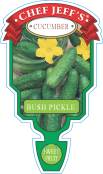 |
The ideal pickling-type of cucumber. It’s small size makes it perfect for space restricted gardens and containers. Compact plants yield a large crop of 4 to 5 inch fruit. Perfect for salads and sandwiches. Fertilize with liquid or slow release plant food for best results. | Plant in mounds | For best results feed with liquid or slow release plant food. | |
Eggplant Classic 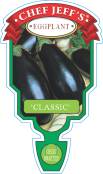 |
Glossy, deep purple-black fruits with heavy yields of gourmet fruit that are high in flavor. Vigorous plants produce high-quality harvests. Perfect baked, steamed, sauteed, roasted, fried or stuffed. Water well in warm weather and fertilize with liquid or slow release plant food for best results. | 2′-3′ apart | For best results feed with liquid or slow release plant food. | |
Eggplant Ichiban 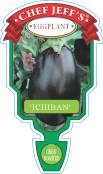 |
Deep purple and almost black, with wonderful, mild flavor. Long and slender fruits are outstanding in stir fries, oriental dishes, splitting and grilling, or roasting. Attractive plants of Asian origin, yield 10 inch fruits with a thinner skin than regular types. An excellent home garden variety. For best results feed with a liquid or slow release fertilizer. | 2′-3′ apart | For best results feed with liquid or slow release plant food. | |
Honeydew Melon “Snow Mass” 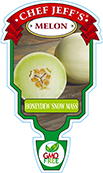 |
Snow Mass is a superb all around garden performer that tolerates hot, long summer climates. It produces round to oblong, 6-8 inch diameter fruit with a cream colored rind. This small seed cavity Honeydew has light green flesh that is juicy and sweet and grows on very vigorous vines with extra-large leaves that provide protection from the sun. Melon is ready to harvest when it turns pale yellow or tan. | For best results feed with liquid or slow release plant food. | ||
Pea Sugar Snap 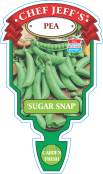 |
The crisp, juice taste of garden fresh peas takes me back to grandma’s garden! Sugar Snap’s 3″ pods produce excellent yields on tall vines that require the support of a trellis. These sweet and crunchy pods contain Vitamins A, B, and C, and can be enjoyed fresh off the vine, raw in salads, in stir-fries, or steamed; remove strings before eating. Plant in full sun with cool temperatures and well-drained soil. Eat or freeze peas right after harvest, when the pods are plump and crisp. All-American Selections Winner, AAS. | 4-6′. Needs staking. | ||
Watermelon Crimson Sweet 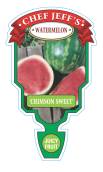 |
A beautiful green watermelon with darker green stripes and bright, rosy-red, crispy flesh. Sweet 25lb melons are produced on spreading plants ideal for the home vegetable garden. Plant in mounds in groups of 3 plants, allowing 1 foot between each plant. Perfect for us in fruit salad or eaten on its own. Fertilize with liquid or slow release plant food for best results. | 12″ | For best results feed with liquid or slow release plant food. |
Squash
| Variety | Description | Height | Spacing | Fertilizer |
Acorn Table Ace 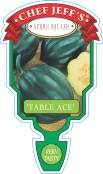 |
Thick, delicious, bright orange flesh and black-green outer skin. Compact, semi-bushy plants produce one of the tastiest acorn squash grown. This winter squash stores well and is great for small gardens. Water well in warm weather and fertilize with a liquid or slow release plant food for best results. Plant in raised rows that are 24″ apart. | 24″ | For best results feed with liquid or slow release plant food. | |
Butternut 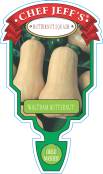 |
This popular winter squash is 8-10 inches long with creamy-tan skin and a sweet, nutty flavor. Uniform fruits with heavy yields store longer in Winter. Use in soups, puree for pies and side dishes or cube and add to stews. Water well in dry weather and fertilize with liquid or slow release plant food for best results. | 18″-36″ | For best results feed with liquid or slow release plant food. | |
Lemon Sun 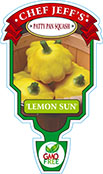 |
Lemon Sun Patty Pan is a bush type summer squash that produces terrific yields of small, disc-shaped, bright yellow squash with scalloped edges. There are multiple ways to use this squash, they can be picked when still young when the flower is attached, or at any size before they reach their 4-5″ diameter at maturity. Pick on the smaller size for the best flavor when they are more tender. Try to pick often to encourage and increase squash production. Male flowers can be harvested and used to make stuffed blossoms! Easy to grow and easy to prepare, steam, bake or microwave until tender. | 24-36″ | 36-48″ | For best results feed with liquid or slow release plant food. |
Peter Pan 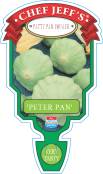 |
Green tinted, saucer-shaped fruits are meaty and have a delicious, buttery flavor. High yields on compact plants are all a part of this summer squash. Water well in warm weather. | 24″ | For best results feed with liquid or slow release plant food. | |
Spaghetti 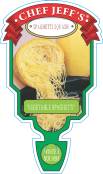 |
For something a little different in your garden this year, try this unusual winter squash! 8-10 inch oblong fruit turns yellow when ripe. The spaghetti-like strands of flesh can be scooped out or boiled right in the shell. This shell can also be served cold with salad dressing or even eaten with spaghetti sauce. Holds up well for several months in storage. For best results feed with a liquid or slow release fertilizer. | 1-2′ | For best results feed with liquid or slow release plant food. | |
Yellow Crookneck 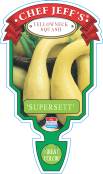 |
Glossy yellow fruit and large yields make this squash a favorite choice. High-quality, thick, curved neck resists breaking. A grower’s dream, as you can harvest as a 2″ mini squash or allow to reach its mature 6-8 inch length. Mild flavor, texture, and color: used raw in salads, grilled, stir-fried, deep-fried, stuffed or added to main dishes. Water well in warm weather and fertilize with liquid or slow release plant food for best results. | 12″-18″ | For best results feed with liquid or slow release plant food. | |
Zucchini Aristocrat 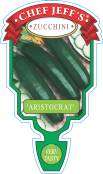 |
This widely adaptable zucchini provides high yields of dark green, 6 to 7 inch long fruit. Ideal for the home vegetable garden. Perfect served steamed or roasted and is the ideal compliment to many cooked dishes. Fertilize with liquid or slow release plant food for best results. | 20″ | For best results feeed with liquid or slow release plant food. |
Premium
| Variety | Description | Height | Spacing | Fertilizer |
Cucumber Whopper 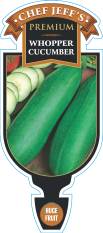 |
Great big, 8 to 10 inch top quality bush cucumbers are produced on long lasting vines throughout summer. Tender, sweet, crisp and virtually seedless. 55 days until maturity. Perfect for salads and superb on sandwiches! Water well in warm weather and apply liquid or slow release fertilizer for best results. | 2-3′ | For best results feed with liquid or slow release plant food. | |
Eggplant Fairy Tale 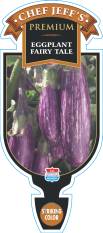 |
A unique eggplant variety that has pretty waves of lavender fruit with white streaking that grows in clusters of 3 to 5. This tasty treat produces a full two weeks earlier than the average hybrid eggplant! Fair Tale is a dwarf plant that is perfect for home gardens, and also makes an attractive ornamental plant because of its beautiful, bright lavender flowers and soft green foliage. You will find this plant has abundant yields whether planted in containers on your patio or in the vegetable garden. Harvest in the baby stage, when fruits are 4 inches long by 1 3/4 wider at the shoulder, for a sweet, bitter-free flavor, with fewer seeds. Wonderful in baked casseroles with other vegetables, in stir fries, roasted, grilled on the barbecue, and in pasta dishes!! Plant in full sun in well-drained soil. Feed with a liquid or slow release fertilizer for best results. | 24-30″ | For best results feed with liquid or slow release plant food. | |
Eggplant Whopper 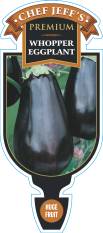 |
The highest yielding, oval type eggplant available. The deep purple, almost black fruit are mild and delicious. Produced on vigorous plants growing to 30 inches high. 62 days until maturity. Perfect for Greek and Middle Eastern cuisine. Water well in warm weather and apply liquid or slow release fertilizer for best results. | 2-3′ | For best results feed with liquid or slow release plant food. | |
Okra 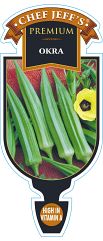 |
Okra thrives in warm temperatures and produces a fleshy, ribbed pod that is eaten as a vegetable. The pods are most tender when harvested small, at 2-3 inches long. Harvest these fast growing pods every two days or productivity can be reduced. When cooked, the pods release a gummy substance that I use as a thickening agent in soups. Okra is high in vitamin A and can also be used for gumbos, fried, roasted, canned or pickled. The beautiful hibiscus-like flowers make this a worthwhile ornamental plant for your garden. 50-60 days to maturity. | 4 1/2″ | 2′ | For best results feed with liquid or slow release plant food. |
Pumpkin Howden Biggie  |
This large pumpkin averages 25 pounds with a dark, strong stem and true pumpkin shape! The dark orange fruits have a thick, ridged flesh to maintain uniform shape and husky growth. Perfect for fall decoration or carved into Jack-O-Lanterns! 115 days to maturity. Plant in hills 3 to 6 feed apart and in rows 10-15 feet apart. | 3-6′ | For best results feed with liquid or slow release plant food. | |
Watermelon Whopper 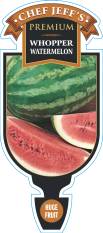 |
Bigger, heavier and sweeter! Succulent bright red flesh and a thin, strong, glossy rind. Large Yields. Water well in warm weather and apply liquid or slow release fertilizer for best results. | 4-5′ | For best results feed with liquid or slow release plant food. |
Special Red
| Variety | Description | Height | Spacing | Fertilizer |
Strawberry Berries Galore 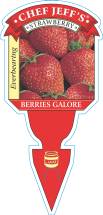 |
Nothing compares to a vine-ripened strawberry that has been seasoned to perfection in the early summer sunshine. One of my favorite everbearing selections, Berries Galore, produces large yeilds of sweet fruit in June and for many months after that. I savor the fresh fruit in desserts, juices, jams, garnishes and syrups; they are also a delicious snack. Deep green, shiny foliage and large early blooms are ideal for containers, hanging baskets, and the home garden. | 6-8″ | 12″ | For best results feed with liquid of slow release plant food |
Cool Season
Other
| Variety | Description | Height | Spacing | Fertilizer |
Peanut  |
Spanish peanuts are cholesterol free, high in protein, contain essential vitamins and minerals, and are often referred to as nutrition in a nutshell. They are the sweetest peanuts with a full, rich taste, often used in candies and peanut oil. Peanuts have clover-like foliage with small, yellow, pea-like flowers; they produce around 30-60 peanut shells per plant and thrive in loose, well-drained soil. Work the soil several inches deep with compost and organic matter, and elevate or mound your rows for added drainage. Plant peanuts after danger of frost has passed. Harvest your peanuts when the foliage yellows in late summer. Carefully dig up your plants, shake off the loose soil, and hang them in a warm, dry location for 1-2 weeks. Then, pull the peanut pods from the plants and air dry them for an additional 1-2 weeks. Your peanuts should not be eaten until well dried. 100-120 days to harvest. | 24″ | Compost and Organic Matter | |
Popcorn  |
My entire family enjoys the simple pleasure of growing fresh from the garden popcorn. The hot popped kernels will have delicious flavor and tenderness with a fluffy shape and good color. This plant boasts good stalk strength, grain color, and successful popping. Popcorn can cross-pollinate with other varieties of sweet corn, so plant them at least 14 days apart. Plant your corn in blocks, or rows of 4 or more to ensure good pollination. Leave your popcorn in the garden until the chalks are brown, the husks are dry, and the kernels are hard. Twist and snap each ear from the stalk before the first ears out in a warm, dry location with good air circulation for four weeks to cure. The kernels are ready for storage when they can easily be twisted or rubbed from the cob. The kernels keep up to three years in airtight containers. Pop your homegrown popcorn on the stovetop or your usual, favorite way. Harvest 90-110 days. | 8′ | 12″ |
